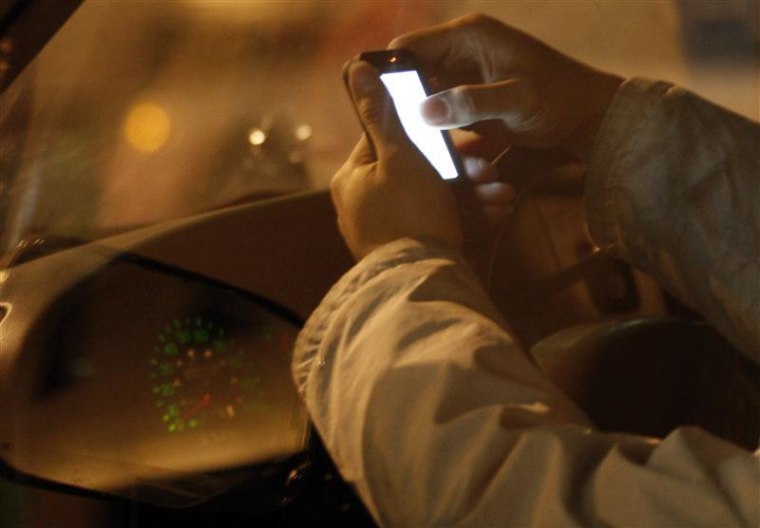Virtually all teenagers agree that texting while driving is dangerous but nearly half admit they have done it anyway, according to a new nationwide survey released on Monday.
Three-quarters of teenagers also said in an online poll that texting while driving was common among their friends, and reported that their parents text at nearly the same rate as they do while driving.
The poll, conducted by an independent research firm for AT&T, was the second survey in a week to show teens agree that text messaging while driving was dangerous, even as many admit to doing it.
Consumer Reports said last week its survey showed that while eight in 10 said they knew the risks, some 29 percent of drivers aged 16 to 21 had text messaged while driving in the past month.
With texting as teens' main mode of communication, at an average rate of more than 3,400 per month according to Nielsen research, the implications are alarming, said Andrea Brands, AT&T's director of consumer safety and education.
"We know that underreporting is always an issue, and even so we're seeing staggeringly high numbers of teens who admit to texting and driving," Brands said.
Some 97 percent of the 1,200 teens surveyed said texting while driving was dangerous, with about two-thirds saying it was very dangerous. Yet 43 percent said they had done so in the past three months.
Compounding the issue was the finding of what teens thought constituted texting while driving.
"The findings indicate reading a text is somehow (seen as) less dangerous than typing a text," she said.
Sixty-one percent of teens said they glanced at their phone while driving in the past three months.
Some 41 percent also said they had seen parents driving and texting in recent months. Seventy seven percent agreed with the statement that adults text while driving "all the time."
Brands said that findings have helped the company respond with an its 'It Can Wait' initiatives. One aspect is a 30-city tour of a texting-while-driving simulator which was launched, mainly in schools last week. A computerized car allows users to text and drive virtually, providing a realistic look at what can happen.
The survey showed that 89 percent of teens expect a reply to emails or text messages right away, or within five minutes.
Other findings included higher texting rate among Hispanic drivers, both teens and parents, versus Caucasian or African-American drivers. The full results can be found at att.com/itcanwait.
According to the U.S. National Highway Traffic Safety Administration (NHTSA), some 3,092 people were killed in 2010 in "distracted-affected crashes," or 9.4 percent of road deaths.
A NHTSA survey this year found that drivers 18-to-20 showed the highest level of phone involvement in crashes or near-crashes, with drivers that age three times more likely to read or send emails or texts while driving, than those 25 and older.
Thirty-seven of the 50 U.S. states have banned using mobile device keyboards while driving and 10 states have outlawed the use of handheld phones.
